Do you know what the biggest birds in the world are?
If you’re curious about the largest species of birds on our planet, you’ll love this list with 19 amazing and massive birds.
We’ll talk about the planets’ largest birds: the heaviest birds, tallest birds, longest birds, largest flying birds, largest living birds, birds with the biggest wingspan, or whatever other categories of biggest birds you can think of!
Let’s get to it!
Biggest Birds in the World
Here are the largest bird species on this planet!
19. Andean Condor
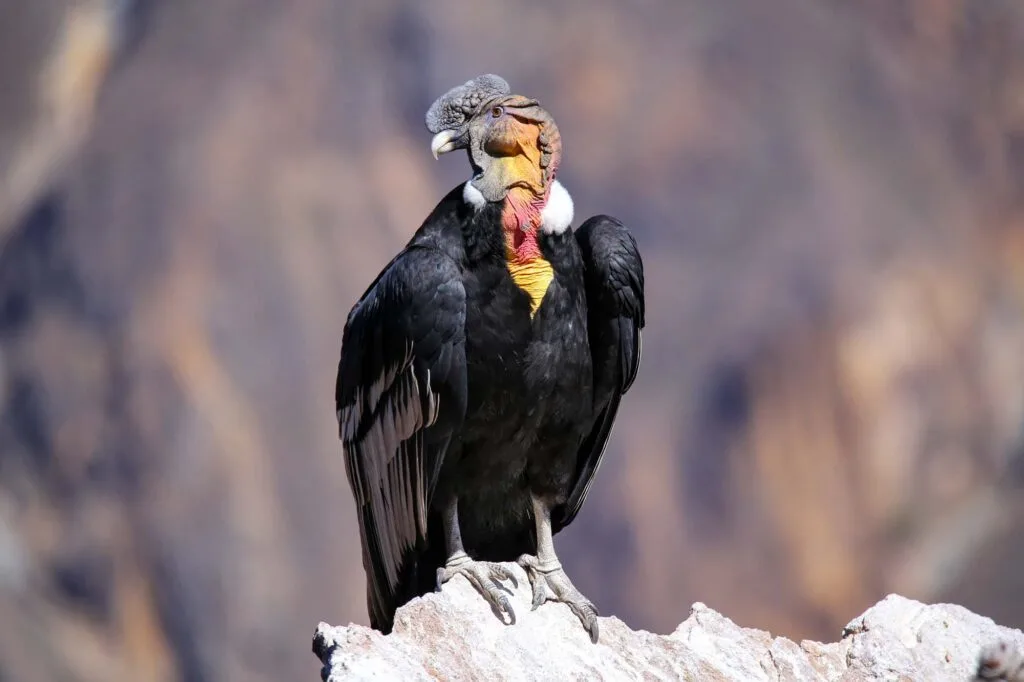
Andean condors (Vultur gryphus) are a species of vulture native to South America.
With a weight of around 33 pounds and a maximum wingspan of over 10 feet, these are the largest birds of prey in the world.
These birds have a long lifespan, often living for close to 70 years in the wild. They feed mainly on carrion.
18. Dalmatian Pelican

Dalmatian pelicans (Pelecanus crispus) are among the largest living birds in the world and are the heaviest flying birds.
These are the largest of all pelican species, and one can identify them by their silvery-white bodies and an orangish-red pouch beneath their bills.
These giant freshwater birds can reach a whopping 6 feet in length and weigh between 16 to 33 pounds.
Dalmatian pelicans are found in several countries across Asia, Africa, and Europe. They are social birds who prefer to stay in flocks. Their diet mainly consists of fish and a variety of aquatic animals.
17. Whooper Swan
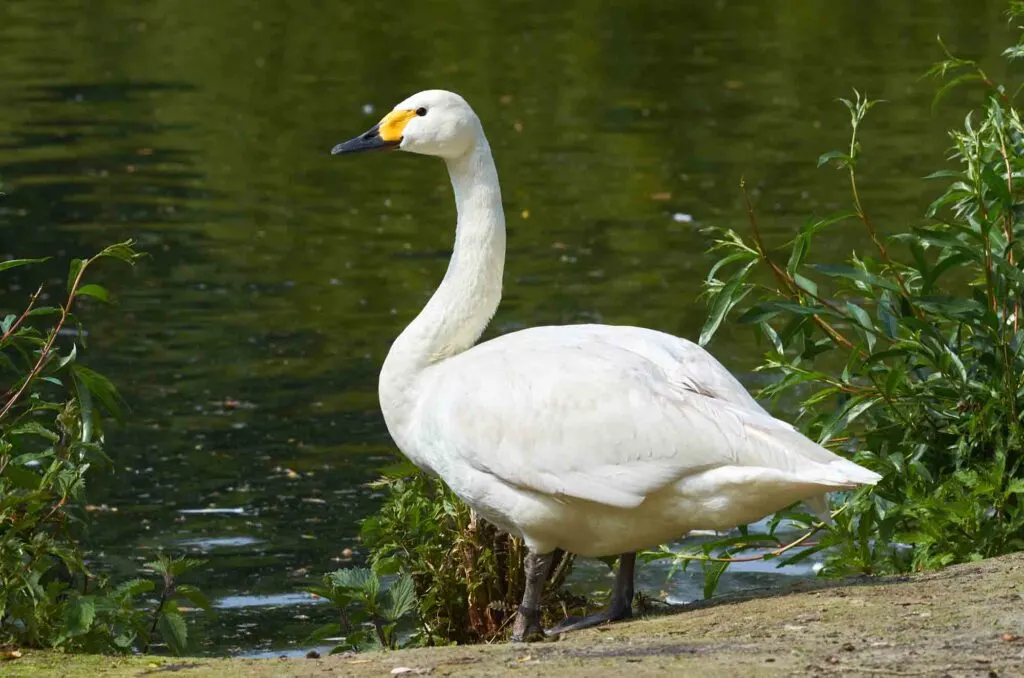
The whooper swan (Cygnus cygnus) is a migratory bird known for its striking appearance.
These elegant birds have a pure white plumage, with black feet and a black & yellow beak. These birds are commonly found in parts of Asia, Europe, and North America.
These are big birds that can reach around 5.4 feet in length and weigh 24.2 pounds.
Their diet consists mainly of aquatic vegetation, although young whooper swans may also feed on insects and other invertebrates. They can have a wingspan of up to 9 feet.
16. Wandering Albatross
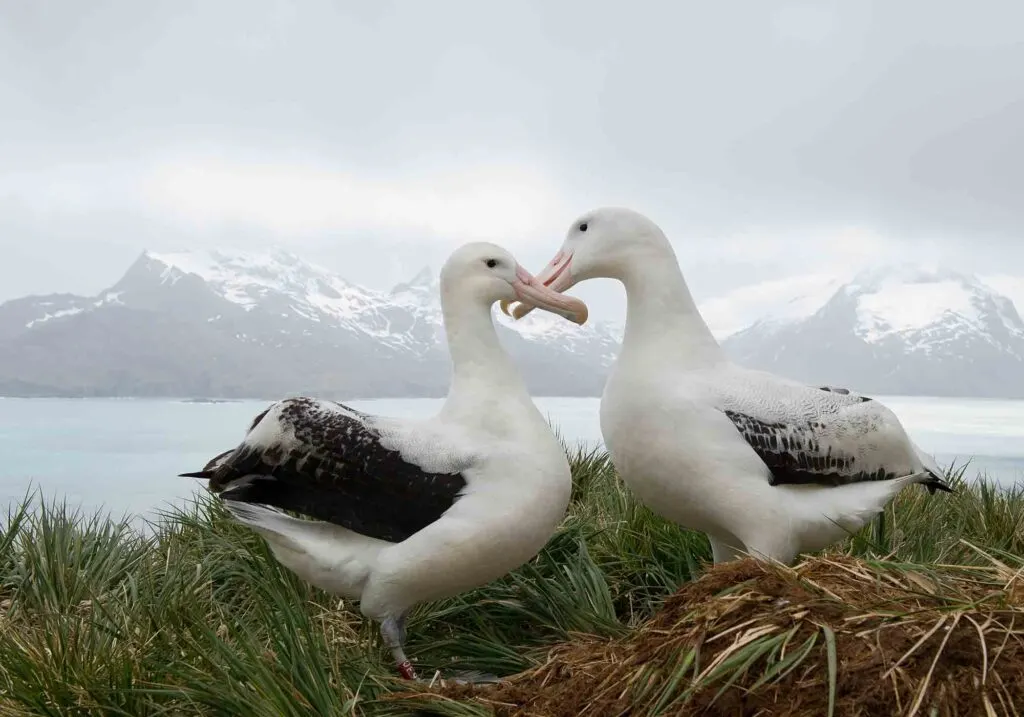
Along with being one of the biggest birds in the world, the wandering albatross (Diomedea exulans) is also famous for being the largest flying bird in the world by wingspan.
These species of albatross can grow up to a length of 4.4 feet and weigh as much as 30 pounds. Their average wingspan varies between 8.2 to 11.4 feet.
These birds usually spend their time wandering over the vast expanse of the Atlantic and Pacific oceans, making their way towards land only during the breeding season. Their diet consists of fish and other marine animals.
15. Trumpeter Swan
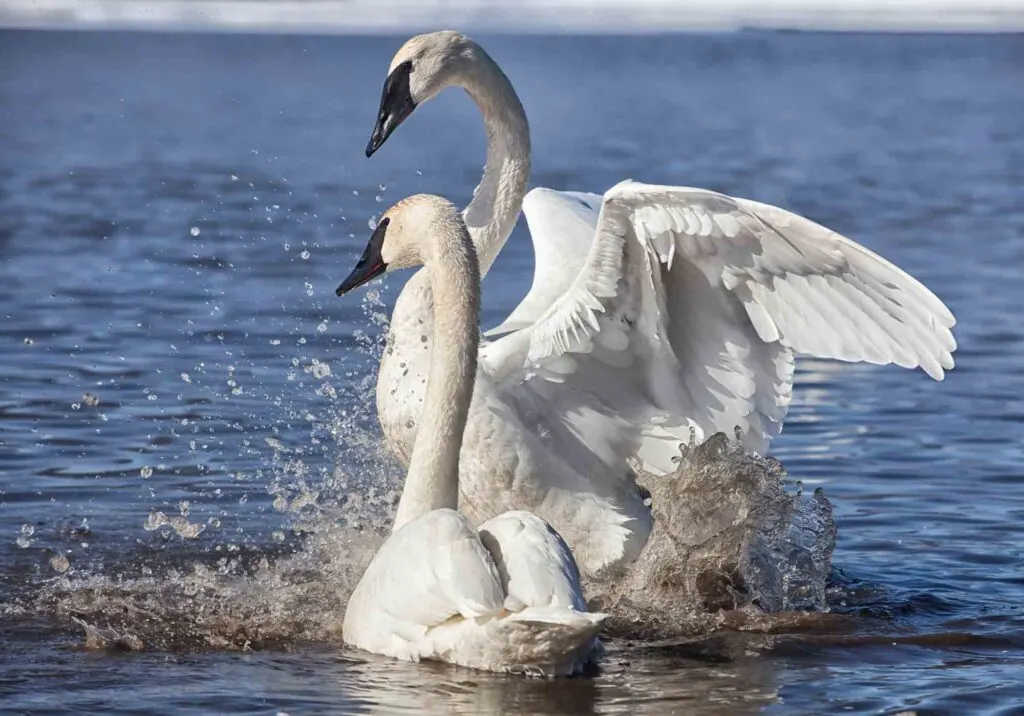
The heaviest living bird native to the United States and Canada, the trumpeter swan (Cygnus buccinator), is found near lakes and ponds in several parts of the continent. These graceful birds can reach around 6 feet and weigh over 25 pounds.
They are white with black beaks and feet and usually feed on aquatic vegetation. Although they were once an endangered species due to excessive hunting, conservation efforts have successfully restored their populations.
14. Kori Bustard
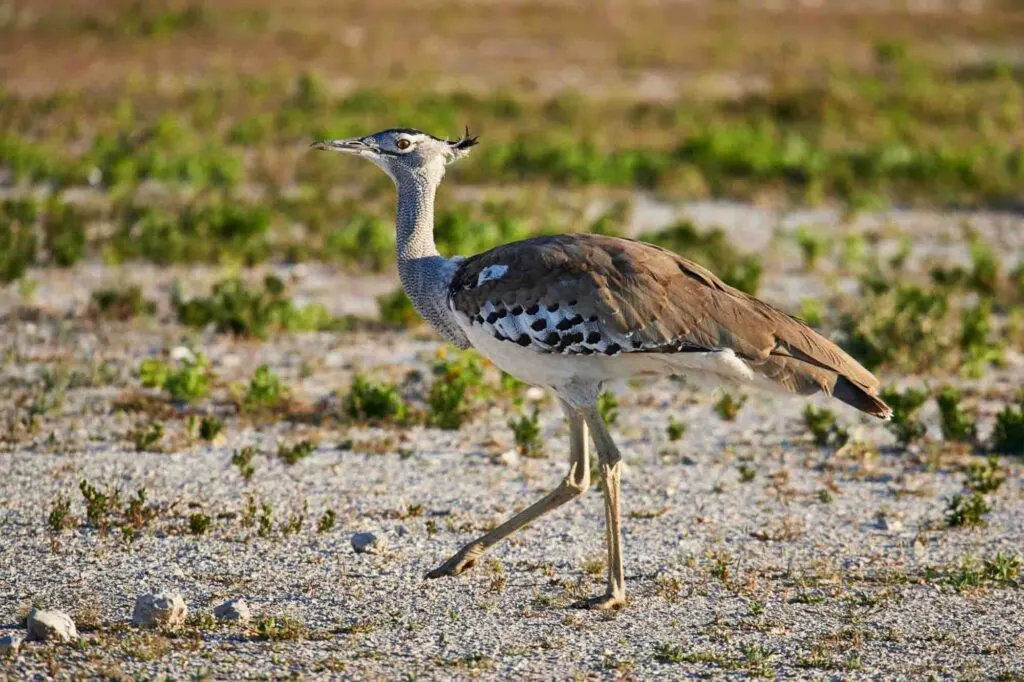
Kori bustards (Ardeotis kori) are heavy birds that can reach around 3.9 feet in height, thanks to their long necks.
Their maximum weight is usually about 40 pounds. Males and females of the species have a huge disparity in size, with the former being almost twice as large as the latter.
These birds are native to Africa, where they prefer to inhabit dry grasslands, scrublands, and savannahs. Their diet consists primarily of insects and small animals, although they occasionally feed on berries and seeds too.
13. King Penguin
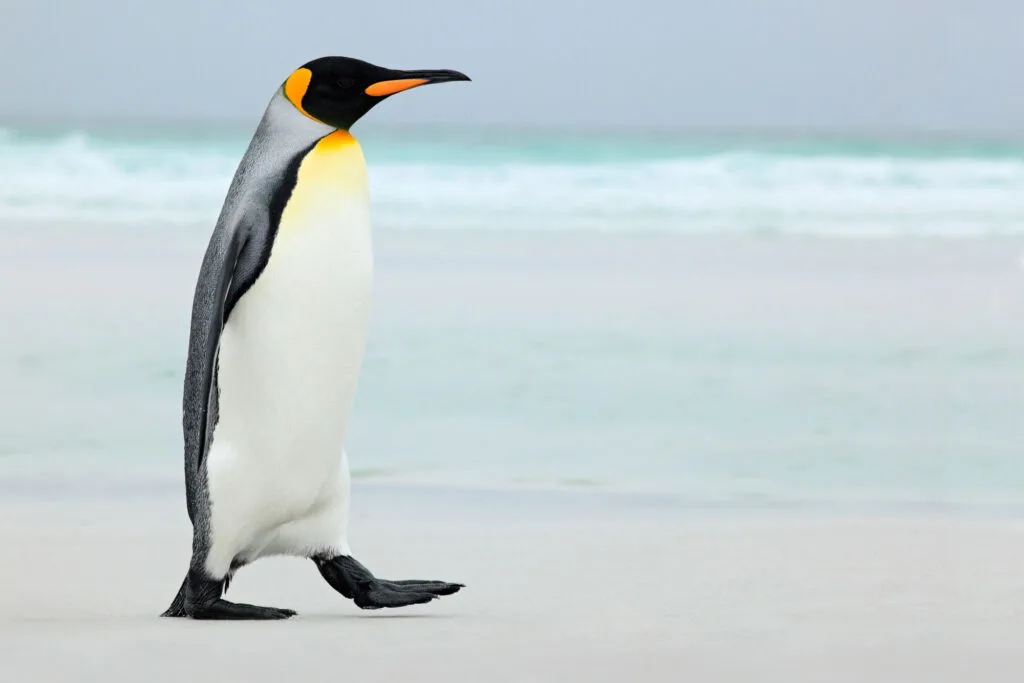
King penguins (Aptenodytes patagonicus) are the second-largest penguin species found on earth.
They are similar in appearance to the emperor penguin and are native to the subantarctic islands. These birds can reach a size of around 37 inches and usually weigh between 30 to 35 pounds.
These birds are excellent divers and feed on fish and marine animals such as squids. Their average lifespan varies between 15 to 20 years in the wild.
12. Great Bustard
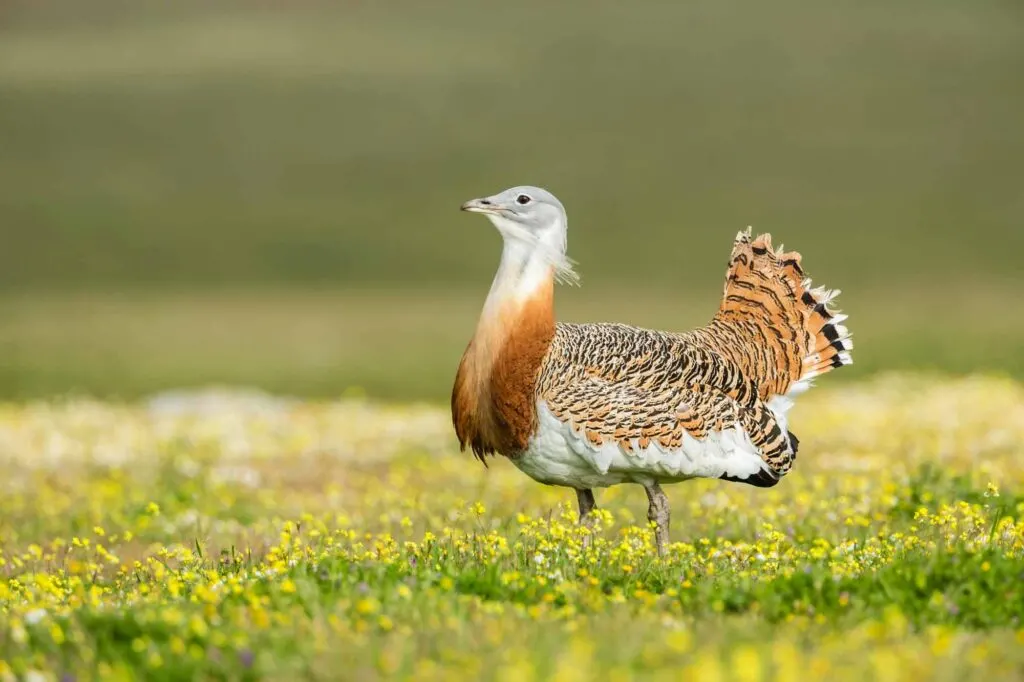
One of the biggest birds in the world, the great bustard (Otis tarda) is a powerful and robust bird found in parts of Europe and Asia.
Their height ranges between 2.4 to 3.4 feet, female birds being comparatively smaller than the males.
These omnivorous birds usually weigh between 6.6 to 39 pounds and feed on a varied diet consisting of vegetation, insects, rodents, amphibians, small birds, etc.
Unfortunately, they are now a vulnerable species, with loss of habitat being the main reason behind their declining populations.
11. Mute Swan
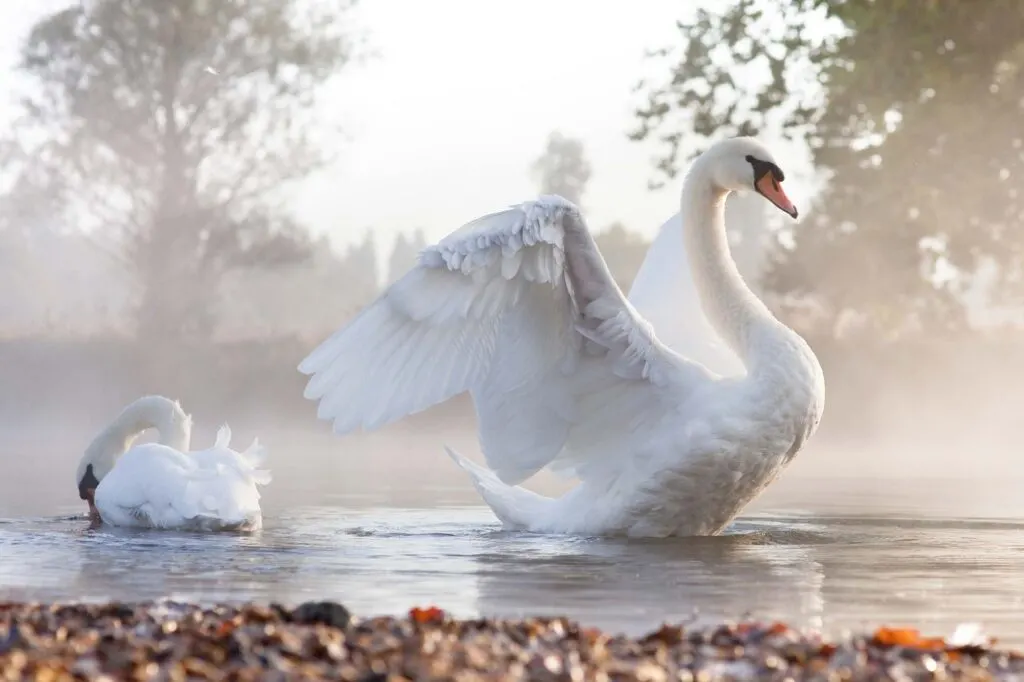
Mute swans (Cygnus olor) are majestic birds that breed in several regions across Asia, Europe, North America, and Africa.
They are most commonly found near aquatic environments, where they feed on vegetation, insects, worms, and small amphibians.
One of the heaviest among all the flying bird species on earth, these swans can weigh up to 28 pounds.
They are easily identifiable due to their striking white bodies, long necks, and orangish bills. Their length usually varies between 4.5 feet to 5.2 feet.
10. Lesser Rhea
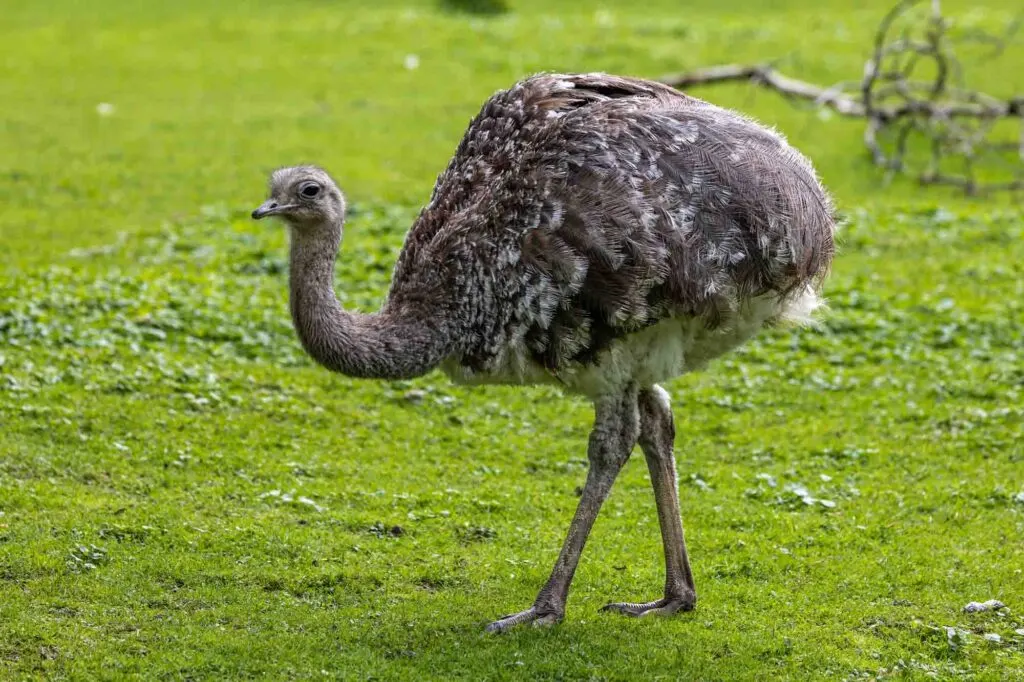
The lesser rhea (Rhea pennata), also known as Darwin’s rhea, is a giant non-flying bird native to parts of South America, including Argentina and Chile.
These birds are usually over 3 feet in height and can weigh between 33 to 55 pounds.
Their diet consists mainly of plant matter such as leaves, fruits, and seeds, although they may also occasionally feed on insects and small vertebrates.
9. Dwarf Cassowary

Dwarf cassowaries (Casuarius bennetti) are named so as they are the smallest among all the three cassowary species.
Although they are also known as the little cassowary, these birds are by no means small. These cassowaries can grow up to a height of 4.92 feet and reach a maximum weight of around 57 pounds.
They are native to the islands of New Britain, New Guinea, and Yapen, where they feed on an omnivorous diet consisting of fruits, insects, and small animals.
8. Domestic Turkey
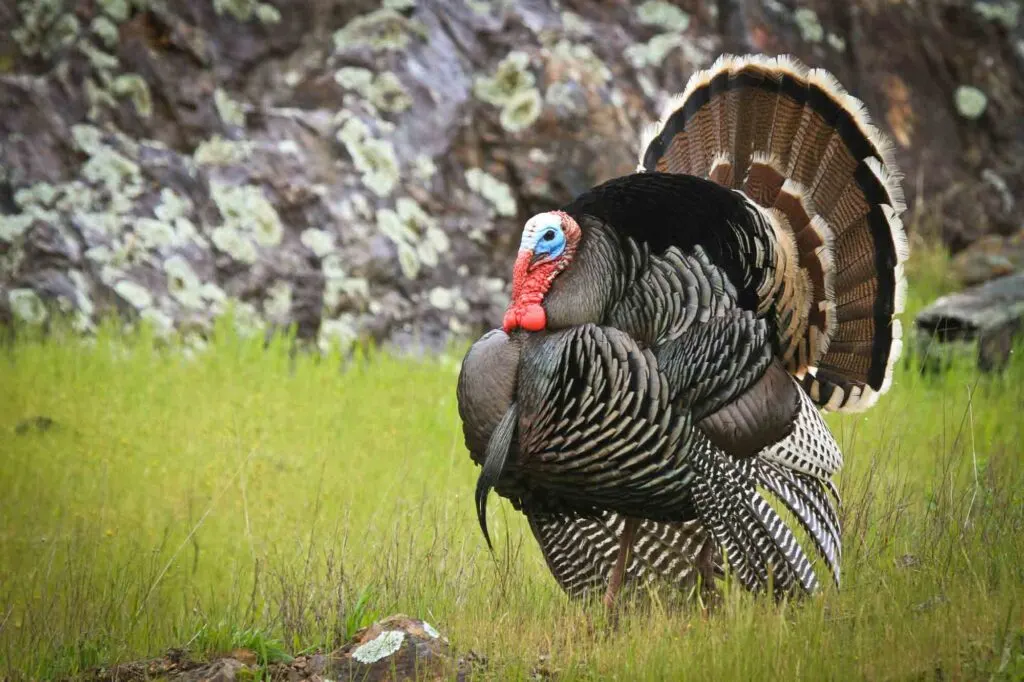
Domestic turkeys (Meleagris gallopavo) are large birds raised in several parts of the world for their meat.
They are descendants of the wild turkey, which is native to America. At close to 86 pounds, the domesticated turkey ranks eighth among the largest birds in the world in terms of their weight.
These are social birds usually between 3.3 to 4.1 feet in length. Their diet consists of seeds and grains. Although they are found in different colors, the white-feathered variety is the most popular for commercial breeding.
7. Greater Rhea
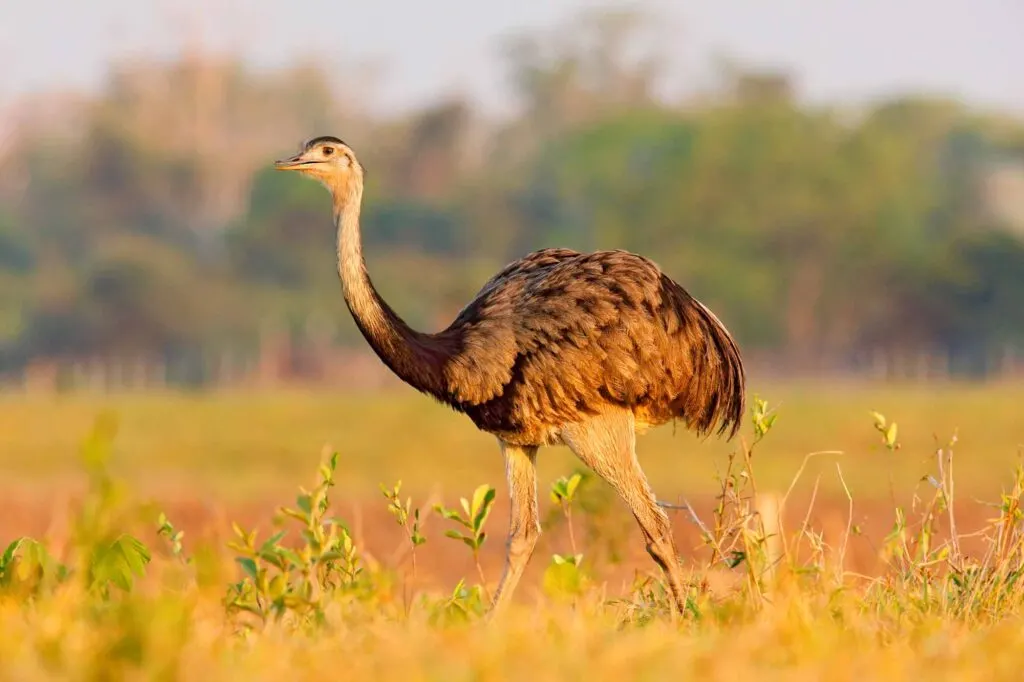
The largest bird species found in South America, the greater rhea (Rhea americana), is a flightless bird that can reach a height of around 4.9 feet in adulthood.
The male birds are larger and heavier than the females and weigh close to 60 pounds.
Greater rheas are omnivorous birds that feed on various fruits, seeds, leaves, lizards, insects, and even small birds. They lay golden-colored eggs which fade and turn white with time.
6. Emperor Penguin

The next on our list of the biggest birds in the world is the majestic emperor penguin (Aptenodytes forsteri).
Native to the ice-packed continent of Antarctica, male and female emperor penguins can grow up to around 3.7 feet in length and weigh between 55 to 100 pounds.
They are white and black birds with some patches of yellow and orange on parts of the breast, neck, and head.
These birds can dive to the depths of around 1,800 feet in search of their prey, consisting mainly of fishes, krill, and other marine animals. They are the largest among all species of penguins.
These flightless birds use their fat stores to insulate themselves against the harsh conditions of the Antarctic winter.
5. Emu
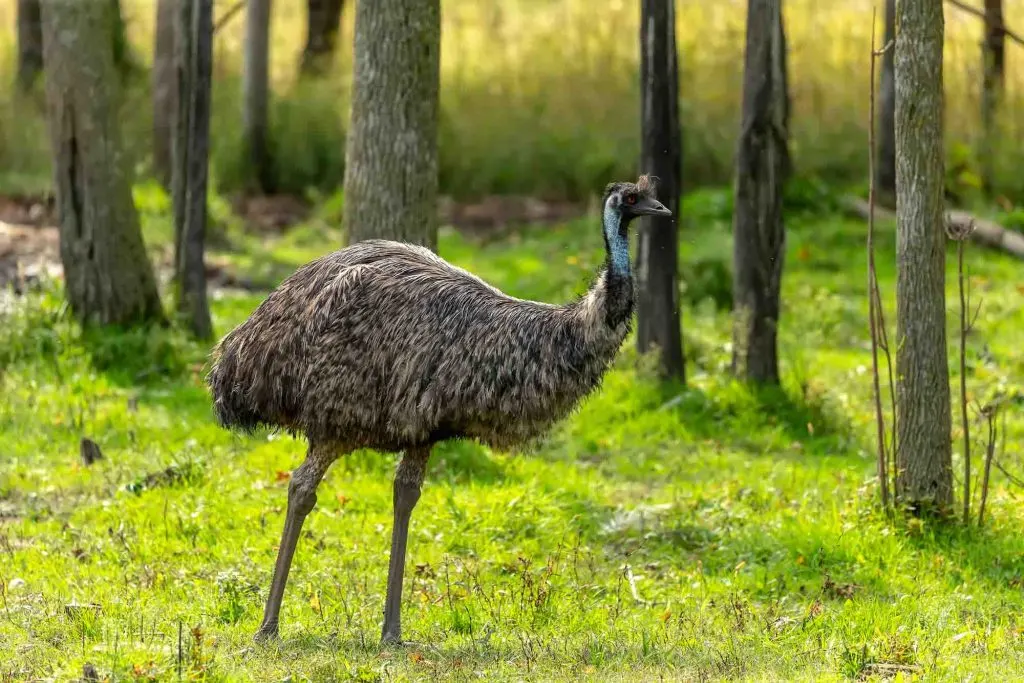
Ranking second in the list of the world’s tallest birds, emus (Dromaius novaehollandiae) are found in various habitats all over Australia.
They have an average height ranging from 4.9 feet to 6.2 feet and weigh up to around 132 pounds.
These are large flightless birds with strong legs, enabling them to run at speeds close to 31 miles per hour.
They usually prefer to lead a solitary life but may form a group if needed. Their diet consists of fruits, flowers, seeds, insects, and smaller vertebrates.
4. Northern Cassowary
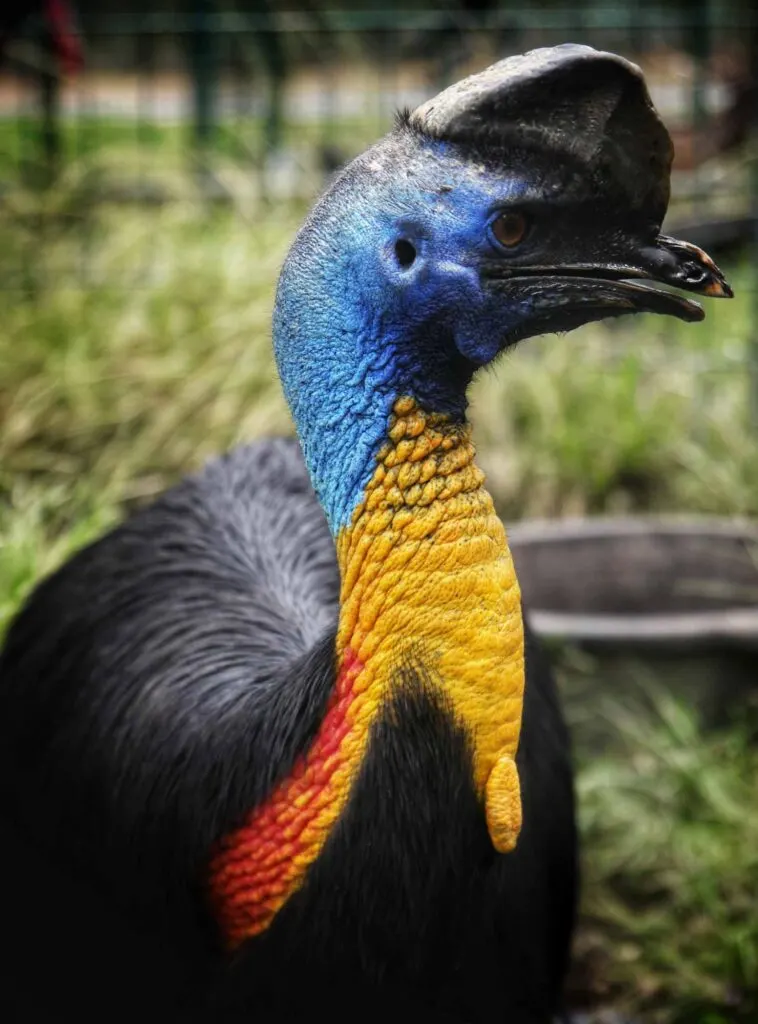
The northern cassowary (Casuarius unappendiculatus) is native to New Guinea and some islands of Indonesia.
Also popular as the golden-necked cassowary, these birds can reach a height of around 5.9 feet tall in adulthood and have an average weight of approximately 128 pounds.
The males are smaller than the females, usually weighing between 66 to 82 pounds.
They follow a varied diet consisting of fruits, berries, insects, smaller vertebrates, and even carrion. They are the fourth heaviest birds currently living on earth.
3. Southern Cassowary
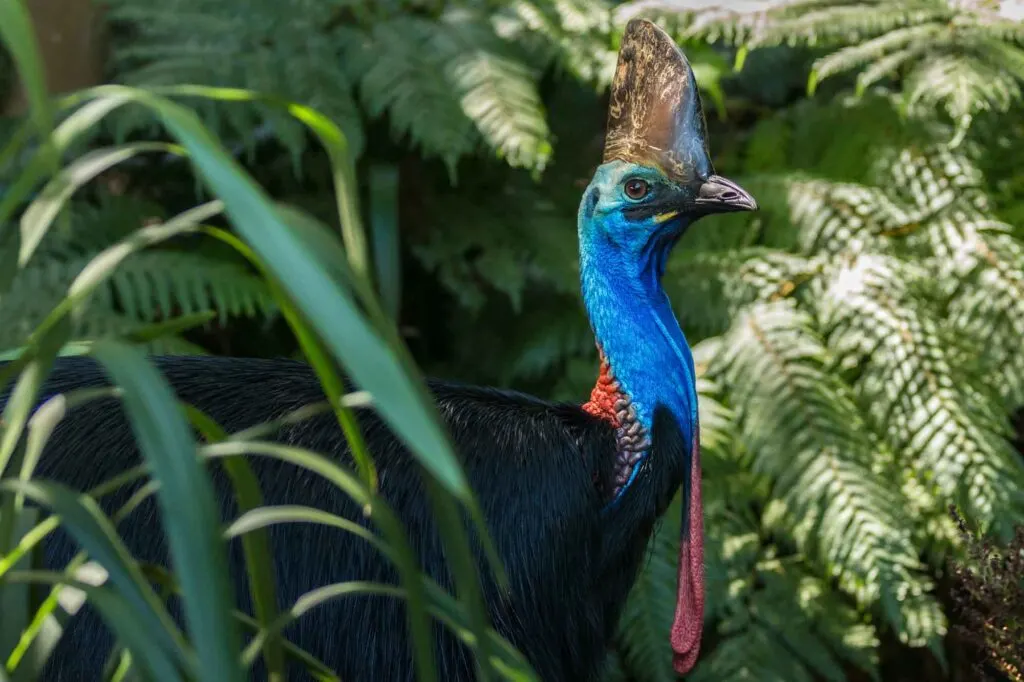
The southern cassowary (Casuarius casuarius) is also known as double-wattled cassowary, Australian cassowary, or two-wattled cassowary.
This bird ranks second among the biggest birds in the world in body weight. A close relative of the emu, these flightless birds are found in some parts of Australia, including Queensland and New Guinea.
Their name translates to ‘horned head,’ referring to the pointed casque on the bird’s head. Adult birds can grow up to around 6 feet tall and have an average weight ranging between 63 to 129 pounds.
Both males and females of this species are similar in appearance, although females are considerably larger and heavier.
Although the diet of these magnificent birds consists mainly of fallen fruits, they are also known to feed on insects and small vertebrates.
2. Somali Ostrich
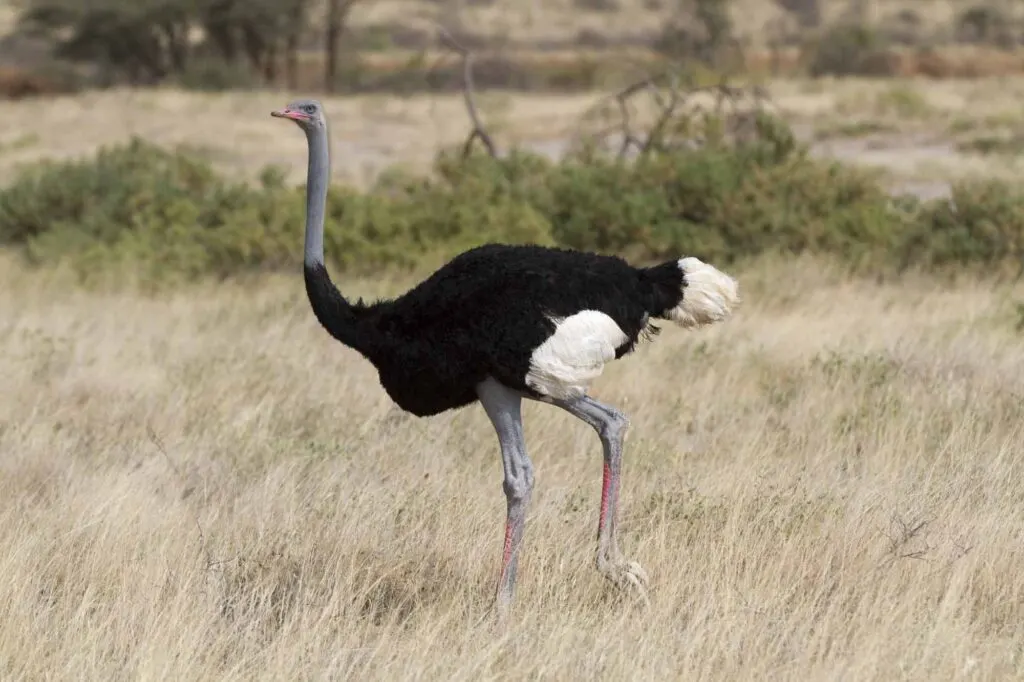
Somali ostriches (Struthio molybdophanes) are large flightless birds recognized as a separate species only in 2014.
These omnivorous birds are native to the dry regions of Africa and can weigh as much as 344 pounds.
Like the common ostrich, the Somali ostrich can also reach a height of around 9 feet tall. But one can distinguish them from the former due to their bluish-gray necks.
However, their populations are currently on a decline, mainly due to poaching and loss of habitat.
1. Common Ostrich
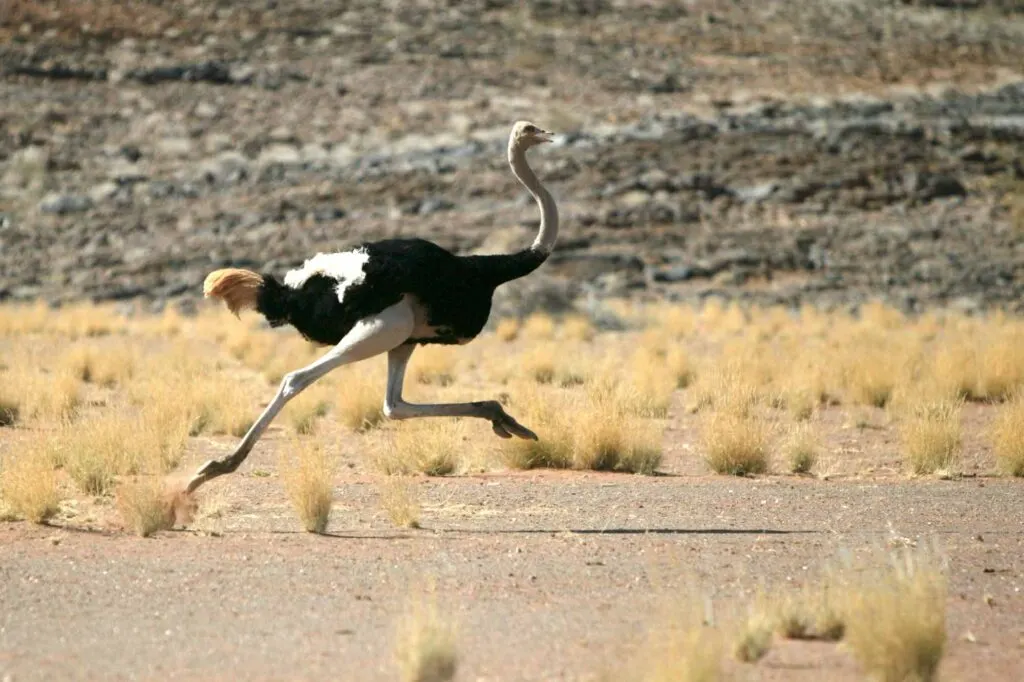
The largest bird in the world is the common ostrich (Struthio camelus). Reaching close to 9 feet in length, these are the biggest living bird species on earth (and among the biggest animals, too).
The adult ostrich is a bird with powerful legs and can weigh up to 320 pounds, making them the heaviest birds by far.
These tallest birds also hold the record for having the biggest eyes (2 inches in diameter) among all land animals.
At present, wild ostriches are only found in the African continent, where they feed on an omnivorous diet consisting of both plants and smaller animals and insects.
In addition, ostriches are the second-fastest land animals, only behind the cheetahs, and the fastest animal on two legs.
Did you know? Ostrich eggs are the largest of any bird, weighing up to 3.1 pounds.
Largest Species of Birds
- Harpy eagle (Harpia harpyja) is the largest eagle type.
- Eurasian eagle-owl (Bubo bubo) is the largest owl type.
- Gyrfalcon (Falco rusticolus) is the largest falcon type.
- Cinereous vulture (Aegypius monachus), also known as black vulture, is among the largest Old World vultures.
Did you enjoy reading about the biggest birds in the world? Then share this blog post with a friend!
